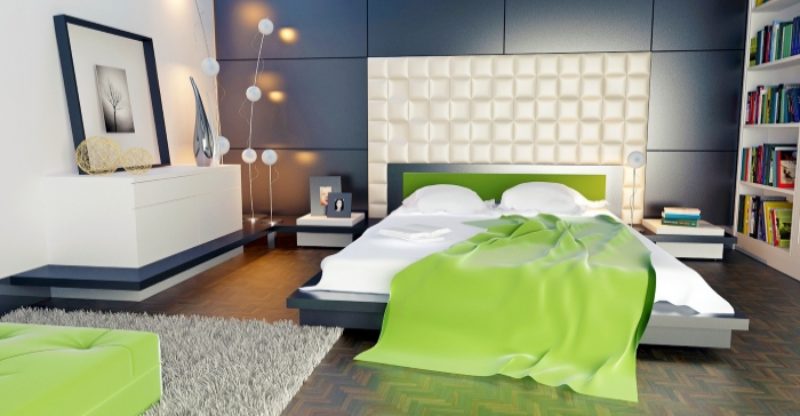How to Get a Restful Sleep? — Fix Your Sleep Environment
Anxiety, stress in your life, jet lag, even a medical condition – can all be causes of you not getting a restful sleep.
While treating these problems will vary from person to person, maintaining a good sleep environment is never a bad idea.
Creating an ideal environment, could be the first step on your road to a better night’s sleep (and all the positive effects that come with it).
Article Table Of Contents
- Keep the Bedroom a Place of Rest
- Keep Your Bedroom at an Ideal Temperature
- Sleep on a Comfortable Bed
- Keep the Clock Out of Sight
- No Lights
- Take-A-Ways
Here are five essentials to keep in mind when creating your own “good sleep environment.”
1. Keep the Bedroom a Place of Rest
These days, many of us have notebook computers, wireless Internet, and other mobile devices that make it possible for us to transform any room into an office.
But if you suffer from a sleep disorder, make sure you keep your bedroom… a bedroom – a place of rest away from work and play.
Don’t allow the bedroom to become an office, a playroom, or a TV room. Those who suffer from sleep disorders need to eliminate all distractions in the form of noise, light, or activity.
2. Ideal Temperature
When creating a good sleep environment, you need to make sure you minimize any discomfort. Being too cold or too hot can disrupt a comfortable sleep and once disrupted (for a person with a sleep disorder) it may be difficult to get back into a deep slumber.
Keeping the room at a constant, ideal temperature will help you get and stay asleep. While it’s debatable as to what the best temperature is, it can be agreed upon that anything about 75 degrees Fahrenheit is too warm and anything below 54 degrees, too cold.
Try a median between 60–70 degrees (65) as a compromise, but the deciding factor should be you personally and what you find to be “ideal.” If you keep kicking the covers off or shivering yourself awake, adjust the temperature until it’s just right – and make note of what that number is for you.
3. Comfortable Bed
One symptom of a sleep disorder or impairment is tossing and turning during the night, and one reason you may be restless is because your mattress is uncomfortable.
As with most anything in life, what’s “right” for you (and your back, your posture, your comfort) is specific to your body. However, research has shown that supple mattresses may be more conducive to a good night’s rest versus a firmer one.
Definitely avoid sleeping on a lumpy mattress if it can be helped. A new mattress may be in order if you’ve outgrown your current one, either in size or comfort. If you have a spouse who prefers a different type of mattress, consider getting the type of bed where each of you set the mattress to your perfect number.
4. Keep the Clock Out of Sight
If you can, try to keep your clock out of sight. Set your alarm and then put it somewhere else or turn it away from you – out of your general view. For instance, instead of having the clock on the nightstand, put it on the dresser in the far corner.
If a clock is visible, you may find yourself staring at it or waking up periodically to look at it. If you’re making an effort to create a good sleep environment, it means that you’re aware of an impairment.
If you’re trying to break the cycle of sleeplessness, then it’s important that you don’t focus on time. Seeing how early it is or how little time has passed, can only lead to frustration.
5. No Lights
Remember that a dark bedroom can help your body “know” it’s time for rest. Light triggers a lot in us and is associated with our waking hours. To help the body adjust to a regular sleep cycle, make an effort to distinguish between daytime and bedtime.
When it’s time to sleep, keep light sources to a minimum, including when you get up to go to the bathroom. As with a TV, computer, or video game, you’ll want to avoid anything that can stimulate your brain or body out of rest. Even if your eyes are closed, light in your bedroom can disrupt your sleep.
Take-A-Ways
If these steps are taken, in addition to noise reduction and a few other considerations, such as making a separate sleeping area for pets (that are used to sleeping with you) – then you should be on your way to eliminating some of the factors that may have been contributing to your persistent sleep problems.




